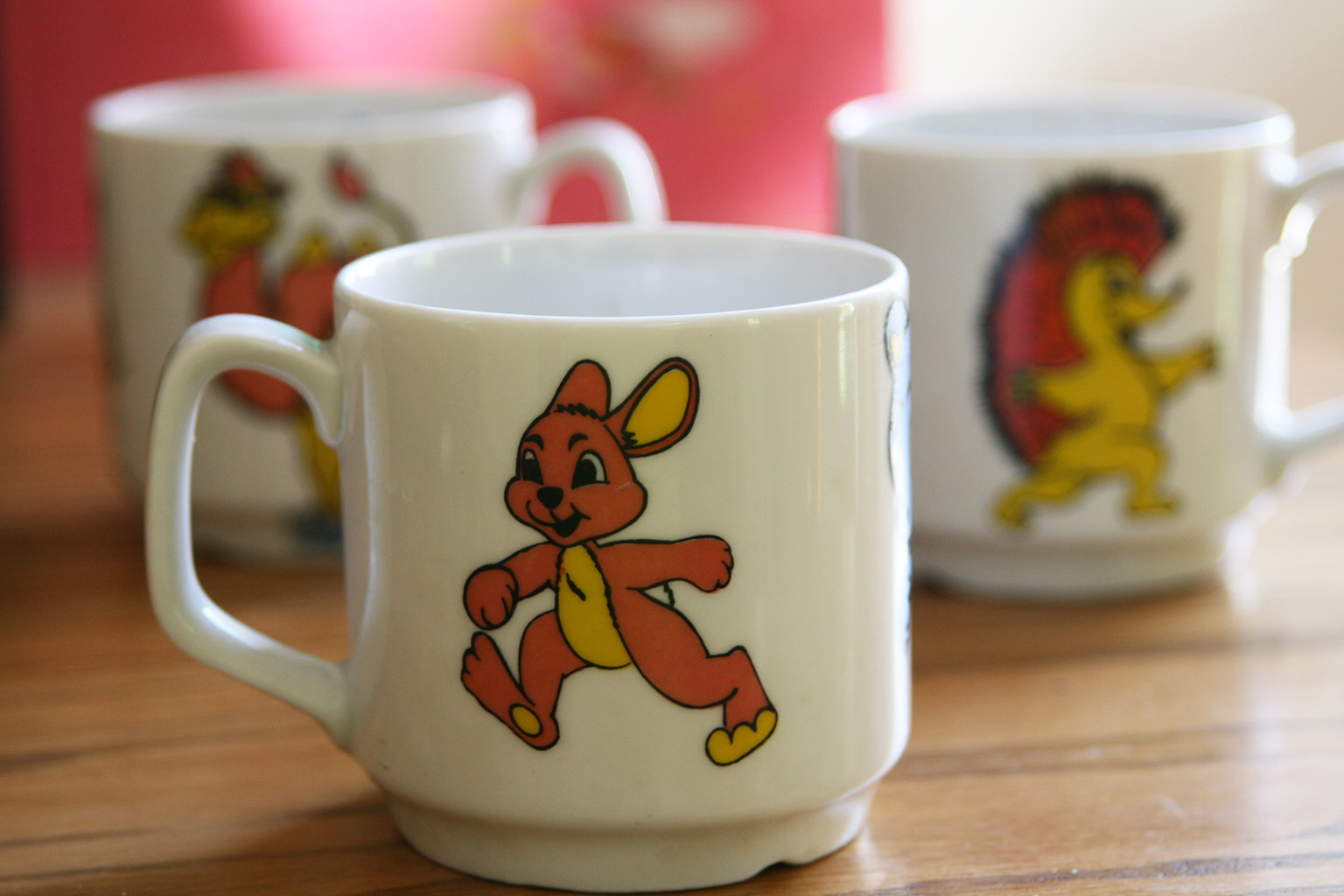Summer shoes—for me—can be a bit of a nightmare to pull off with any grace whatsoever. With the hot, humid, overbearing summers in the northeast, I personally cannot stand to wear socks, say, June through September. Which can get a little less-than-quaint, let’s say, when you only cycle between a few pairs of shoes and you walk as much as I do. So whenever I stumble across a new, animal-friendly, nice-looking, well-made, well-aerated shoe for warm weather, I swoon a little bit.
Shoes Like Pottery—a new company out of Japan that fires their shoes in kilns like (you guessed it) pottery—is certainly producing some swoon-worthy shoes.
Their tough-yet-soft canvas, uniquely flexible soles, and bright blue pop of color are just what my summer needed. That and maybe a few less massive urban heat waves.
With the intriguing name and our perpetual fascination with all things Japanese, we decided to reach out to the company to find out more about the shoes, the process involved in making them, and the company behind it all. US Sales Manager + Brand Representative, Matthew Butlett was kind enough to entertain our inquisitive minds. Find out below how you cook a shoe to perfection.
raven + crow: First off, what made you want to get into the shoe business?
Matthew Butlett: Honestly, I kind of just fell into the shoe business…. I do love the whole process of seeing the initial shoe design, bringing it to prototype form, selling the shoes, and then and taking them to market. Seeing the shoes perform at the retail level and having people wear them is very rewarding. I studied International Business and Spanish and then lived in Japan for a while and speak the language a bit. So working for Marubeni (the Japanese company we import and distribute through) and with a Japanese shoe company (MoonStar, Shoes Like Pottery’s parent company) also gives me a chance to use my Japanese and travel, which I love.
Certainly not the hard knock life, seemingly. So did Shoes Like Pottery evolve from MoonStar’s tabis? And, for those who don’t know, can you explain what a tabi is and the tradition behind them?
Yes—our vulcanization process was created when we first produced tabis, in 1873. A tabi is a traditional Japanese shoe with a canvas upper and rubber outsole. Long ago, Japanese people wore socks outdoors, but MoonStar invented the tabi and it was well-received in Japan as a more functional, durable alternative to simply wearing socks outside. After that, we began to evolve our vulcanization process at our Japanese factory and eventually brought it to bear with Shoes Like Pottery.
Where does the name MoonStar come from? We love the hand-stamped logo on the shoes.
We just like the idea of the moon and star shining through the night and being seen directly by everyone, so the name MoonStar was chosen for the company a long time ago. But our name originally was Tsuchiya Tabi Company back in 1873 because our founder, Mr. Kurata, started off with his small shop, Tsuchiya Tabi. His family’s crest was the Uchide no Kozuchi, or Lucky Hammer, which is derived from the idea that people can get anything if they take a chance and swing the ‘lucky hammer’. So that’s why we employ the crest to this day for the hand-stamped logo on Shoes Like Pottery.
Ah, I get it now. I didn’t think that looked like a moon + star. So, can you explain the ka-ryu process to us?

The ka-ryu process is the vulcanization we use to make the shoes. They’re fired at 120° C/248° F in a kiln for 70 minutes, similar to the way Japanese pottery is fired. The extreme heat and pressure causes the sulfur mixed inside the raw rubber to chemically react, returning the rubber to its original shape. Our unique ka-ryu process enables us to hand-craft small batches of some of the world’s finest vulcanized shoes.
That’s crazy—you cook the shoes. And the vulcanization process doesn’t harm the fabric?
Our materials are very high-quality—we bring in only first-class canvas and rubber that meets our high standards, so, no, our fabric is definitely not harmed by the vulcanization process.
Got it. So does the firing result in a softer or more durable sole or is more a matter of bonding the sole to the upper fabric or both?
Actually both. It is how we bond the sole to the upper, but the vulcanization process has a long history with the tabi of creating a soft yet durable sole.
I read that the shoes are sewn + manufactured largely by hand because the process is impossible to do mechanically. Why is that?
We produce some shoes mechanically in our factory, but these products are not as lightweight, soft, or as durable because the process is not as refined. With Shoes Like Pottery, our hand-crafted vulcanization process gives shoes the benefits of light weight softness and durability. Each shoe is checked individually by hand so we can ensure each shoes quality.
We love the bright blue sole bottoms. Any significance in those or did you just want an eye-catching color to be part of the design?
MoonStar’s company color is blue, but we modified the color a little for this brand and decided to use it for the outsole and logo.
Yeah, it’s a really nice blue. We’re also really into the photography you feature on the site. Who does that and where was most of it done? The light’s great….
Our Shoes Like Pottery team took most of the photos at our Japanese factory.
Well, they’re really nice. Looking at your list of stores that carry SLP in the US, it looks like you’re mostly in NYC + LA at this point. Do you all have plans to expand and find other outlets in the states?
We’re trying to expand step-by-step—we recently exhibited at Capsule NY looking for other appropriate retailers. We are also selling at Steven Alan in Boston and Atlanta, and to Lost and Found in Toronto.
Do you have any concerns about the higher demand on your products affecting the small-batch process?
Right now, we’re not concerned with higher demand and are keeping the lineup small to focus on the quality.
Nice. Yeah, the focus of the company is impressive—I’ve always admired the action of choosing to do one thing and do it well—but are there any plans for the company to offer anything more than the two shoes, white + black?
Since we only just started selling the brand in November of last year in the US, we wanted to keep it tight and simple. We will have an indigo low top and black and white high top for delivery in January/February of next year though.
Top + bottom photos by us; inset photos courtesy of Shoes Like Pottery.




